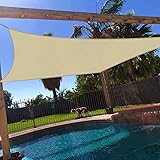Did you know that over 60% of dog owners regularly report their canine companions pulling on the leash? This pervasive issue transforms what should be a joyful bonding activity into a struggle, leaving many pet parents frustrated and even physically strained. As demonstrated in the insightful video above, mastering the art of loose leash walking is not merely about canine obedience; it’s about fostering a harmonious partnership and ensuring a more enjoyable experience for both ends of the leash.
The journey to training a dog not to pull on leash begins with understanding the core mechanics of canine motivation. A dog pulling ahead is often driven by a desire to explore, to sniff, or to reach a perceived reward faster. When this pulling behavior yields progress toward their objective, it becomes powerfully self-reinforcing, much like a child learning that throwing a tantrum sometimes gets them what they want. Therefore, interrupting this reinforcement cycle is paramount in achieving a well-mannered walk.
Deconstructing the “Bulldozer Dog”: Why Dogs Pull
A dog that pulls, often dubbed a “bulldozer dog,” isn’t necessarily being disobedient; rather, they are operating on an established behavioral pattern. Imagine your dog’s perspective: every step forward while pulling confirms that this strategy is effective. This is a classic example of operant conditioning at play, where a behavior (pulling) is followed by a consequence (moving forward), increasing the likelihood of that behavior occurring again. Consequently, addressing this requires a fundamental shift in how the dog perceives forward momentum during walks.
Many handlers inadvertently contribute to this cycle by allowing their dogs to dictate the pace and direction. When Fenway, the dog in the video, pulls, the immediate cessation of forward movement communicates a critical piece of information. This isn’t punitive; it’s simply a clear consequence: pulling yields nothing, while a loose leash offers access to the desired environment. This concept of negative punishment—removing the opportunity to move forward—is a potent tool when applied consistently and fairly.
Breaking the Reinforcement Cycle: The “Be a Tree” Method
The strategy of cementing your feet in the ground, as seen with Fenway, is a highly effective tactic known as the “Be a Tree” method. This isn’t about tugging back or engaging in a battle of strength, which a “bulldozer dog” is likely to win. Instead, it’s about becoming an immovable object, a metaphorical anchor that signals to your dog that forward progress ceases the moment tension is applied to the leash. This disengagement from the struggle is key; the handler offers no resistance, simply an impassive stop.
This technique teaches the dog that pulling literally gets them nowhere. They will eventually learn that the only way to continue the walk, to reach those exciting smells or social interactions, is to release the tension on the leash. Furthermore, this method prevents the dog from inadvertently learning that a momentary pull followed by a handler’s correction still gets them closer to their goal. It is a nuanced application of extinction, where a previously reinforced behavior no longer yields its desired outcome.
Beyond Stopping: Guiding with Intent Through Leash Work
While ceasing forward movement when your dog pulls is foundational, it’s only one half of the equation. As the video rightly points out, simply stopping doesn’t explicitly teach the dog *where* they should be walking. This is where active guidance and the appropriate tools become indispensable. The slip leash, as demonstrated, can be an excellent communication device, offering precise feedback without causing discomfort or confusion when used correctly.
The principle here is delicate: dogs learn from the *absence* of pressure, not from constant tension. A loose leash is the universal sign of correctness in loose leash walking. When your dog is in the ideal position—typically by your side, allowing for a relaxed ‘J’ shape in the leash—there should be no pressure whatsoever. This reward of slack, combined with verbal praise or a treat, clearly marks the desired behavior. Conversely, a gentle, momentary “check” with a slip leash serves as a clear signal for redirection, instantly released the moment the dog responds, teaching them to seek the pressure-free state.
Mastering the Slip Leash: A Tool for Clear Communication
A slip leash, when used expertly, functions as a fluid collar that provides instantaneous feedback. It’s not a punitive device, but rather a mechanism for precise communication, akin to a skilled dancer leading their partner. The key lies in the quick, light “pop and release” motion. A swift, upward or sideways check, followed by an immediate release of all tension, informs the dog that they have veered off course without resorting to prolonged, aversive pressure.
This rapid pressure-and-release mimics the natural communication dogs use with each other, providing clear start-and-stop signals. Constant tension, however, creates a confusing static, akin to shouting into a noisy room. The dog becomes desensitized to the pressure and learns to “lean” into it, ultimately rendering the leash useless as a training aid. Therefore, the goal is always to return to a state of a completely slack leash, reinforcing the understanding that a loose leash equals comfort and forward momentum.
Cultivating Engagement: The Foundation of a Great Walk
Effective training for a dog not to pull on leash extends beyond just physical corrections; it deeply involves mental engagement. A dog that is focused on its handler is far less likely to be distracted by environmental stimuli that might encourage pulling. Think of it as a dance: both partners need to be tuned into each other, anticipating movements, rather than one dragging the other across the floor. This proximal focus is a crucial component of advanced leash manners.
Prior to even stepping out the door, establish a routine that encourages handler focus. Short, engaging warm-up exercises in a low-distraction environment can set the tone for the entire walk. This might include brief periods of eye contact, quick “touch” games, or simple sits and stays, all rewarded generously. These pre-walk rituals build a mental connection, reminding your dog that you are the most interesting thing in their immediate vicinity, even when exciting distractions abound.
Preventative Measures and Proactive Training
Beyond reacting to pulling, proactive training measures significantly contribute to a dog’s ability to maintain loose leash walking. This includes teaching a solid “heel” or “with me” command, where the dog learns to walk precisely by your side, irrespective of the environment. Starting this training in a low-distraction setting, such as your home or backyard, allows the dog to generalize the behavior before introducing the complexities of the outside world.
Moreover, consider the power of the Premack Principle: using a high-probability behavior (like sniffing or greeting) as a reward for a low-probability behavior (walking nicely). For instance, allowing your dog to sniff a fascinating lamppost *after* a period of perfect loose leash walking reinforces the desired behavior. This turns environmental rewards into powerful motivators for maintaining proper walk etiquette, teaching your dog that cooperative walking unlocks greater freedom and enjoyment.
Addressing Common Pitfalls and Sustaining Progress
The journey to mastering loose leash walking is rarely linear; it’s a process marked by both progress and occasional setbacks. A common pitfall is inconsistency. If you occasionally allow your dog to pull or use the leash incorrectly, you create confusion and undermine all previous training efforts. Consistency is the bedrock of canine learning, particularly when training a dog not to pull on leash; every walk, every interaction with the leash, should reinforce the same clear expectations.
Another error lies in neglecting to provide sufficient reinforcement for desirable behavior. Dogs respond incredibly well to positive reinforcement—praise, treats, or even brief play. Every instance of a loose leash should be acknowledged and rewarded, especially in the initial stages of training. This creates a strong positive association with walking politely, turning walks into a rewarding experience rather than a series of corrections. Remember, the ultimate goal is a dog that *chooses* to walk nicely, not one that is constantly coerced.









